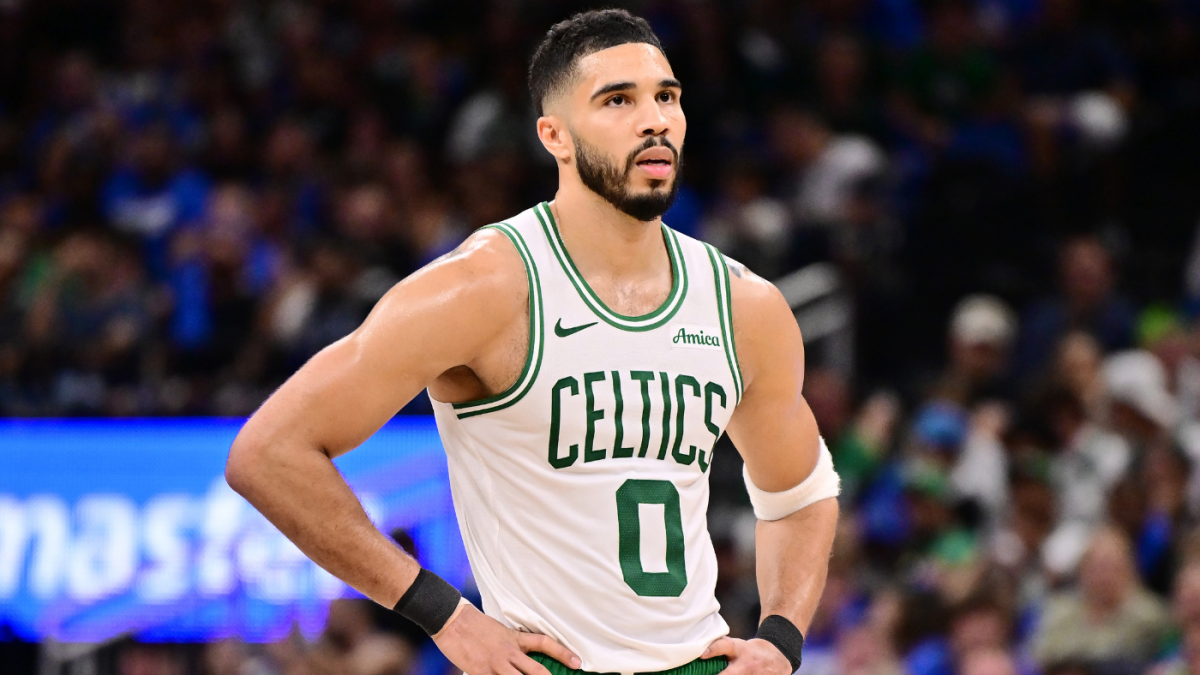

Boston Celtics president Brad Stevens explained the trades that sent Kristaps Porziņģis to the Atlanta Hawks and Jrue Holiday to the Portland Trail Blazers in a straightforward manner on Tuesday.
“The second apron is why those trades happened,” Stevens told reporters.
This, he said, was “obvious.” The second apron, set at $207.8 million for the 2025-26 NBA season, is the threshold at which a team’s payroll becomes extremely punitive under the terms of the NBA’s new collective bargaining agreement. In March, outgoing Celtics owner Wyc Grousbeck predicted that, in the next 40 years, no team would stay above the apron for more than two consecutive seasons.
The second apron is just an imaginary line. Crossing it, though, means that you can’t use the midlevel exception, you can’t aggregate salaries in trades, you can’t take back more salary than you send out in trades, you can’t send cash in trades and your draft pick seven years into the future is “frozen” (i.e. ineligible to be traded). If you cross the imaginary line in three out of five seasons, then that “frozen” pick will be moved to the end of the first round regardless of where you finish in the standings.
“The basketball penalties associated with [staying above the second apron] are real,” Stevens said.
In other words, Boston’s decision to cut costs was not a reaction to Jayson Tatum rupturing his Achilles in the second round of the playoffs. Years before that, the front office chose to assemble a roster that would be too expensive to keep together long-term. “We knew what was coming eventually, but we knew we were going to put the pedal to the metal,” Stevens said. This paid off with the 2024 title, but, the whole time that the Celtics were trying to repeat, they were aware of what was coming next.
“The reality is that we knew going into this year, regardless of how it ended, that we were going to have some really hard decisions to make because of the penalties,” Stevens said. He added that “agents and players have known that, too.”
Neither Holiday nor Porziņģis was taken by surprise. A couple of weeks before trading them, Stevens told them they were unlikely to return.
This is not to say, however, that Tatum’s injury had zero impact on Boston’s offseason. “Who knows, where we end up, how it goes, who knows?” Stevens said. “There’s all kinds of factors.” Let’s say that, instead of blowing a lead, losing their franchise player to a devastating injury and going down 3-1 against the Knicks, the Celtics had won Game 4 and gone on to survive the series, get out of the East and win their 19th championship. In that scenario, getting under the second apron would have still been a priority, but, naturally, it would have been more difficult to accept a so-called gap year and watch both Al Horford and Luke Kornet walk in free agency.
“That [injury], without question, brings some clarity,” Stevens said.
Here’s another hypothetical: Imagine that Boston had gone the opposite direction this summer, re-signing Horford and Kornet and only considering trades that would increase their 2026 championship odds, second apron be damned. How much pressure would that have put on Tatum to try to rush back next season?
“I think one of the things about the Tatum injury that is really important to us is that there’s no expectation on timeline to return, but there’s an expectation on fully returning,” Stevens said. “And so that was part of it, too.”
In context, the Celtics have had an excellent offseason. (My colleague Sam Quinn gave the team a B+; I’d give them an A-.) They didn’t just find a way to get under the second apron; they did it while picking up a second-round pick and two players — Anfernee Simons and Georges Niang — who could potentially be flipped for more stuff in between now and February’s trade deadline. They then signed Josh Minott and Luka Garza on minimum contracts, betting that the former Timberwolves can become rotation players in a new environment with more minutes up for grabs.
Boston is already shopping Simons’ $27.7 million expiring contract, according to ESPN’s Brian Windhorst, because it would like to get under the luxury-tax line — they are currently about $20 million over it, per capsheets.com — and reset the “repeater” clock. Stevens, however, said that Bill Chisholm, who is set to become the team’s new majority owner, has “been pretty clear from the get-go that he wants to make sure that we’re prioritizing basketball assets and the ability to retool this thing at the highest level that we can.” Translation: The Celtics could make more cost-cutting moves, perhaps involving Simons, but they don’t want to give up future picks simply to save money.
“There’s benefits to [getting under the tax line],” Stevens said. “But it’s not the priority. The priority is continuing to make sure that we have our future firsts and all these things that are in play for us so that we can then use those to build.”
The moment Tatum went down at Madison Square Garden, the Celtics as we’ve known them for the past few years were done. Next season, Niang might start at the 4 spot, and, instead of Porziņģis, Horford and Kornet manning the middle, they’ll have a center rotation of Neemias Queta, Garza and Xavier Tillman. If there’s a silver lining here, it’s that, with championship expectations out the widow for now, the team has the freedom to take a temporary step back in the name of building something sustainable. To Stevens, who transitioned from coach to lead executive in 2021, the bigger-picture goal remains unchanged: Putting a championship-caliber team around Tatum and Jaylen Brown.
“I think the best way to say it is, since I moved into this role, my entire focus has been making sure we maximize around those guys,” Stevens said. “And so that’s longer than just this upcoming window. That’s been this whole window.”
This news was originally published on this post .





Be the first to leave a comment